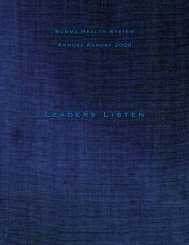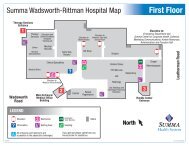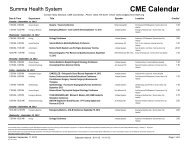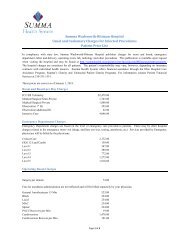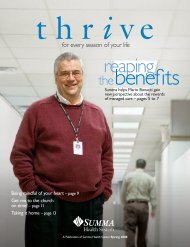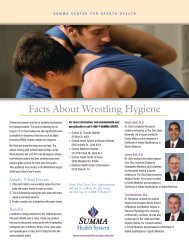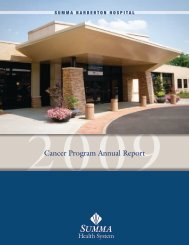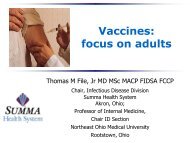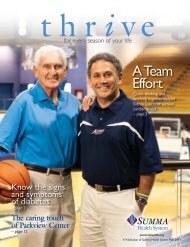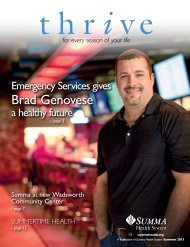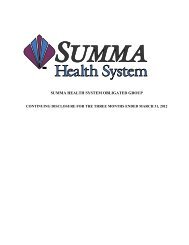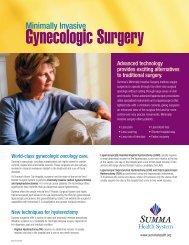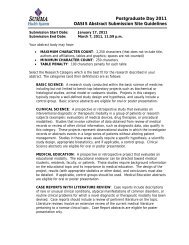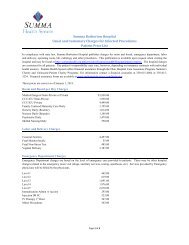2011 Annual Report - Summa Health System
2011 Annual Report - Summa Health System
2011 Annual Report - Summa Health System
Create successful ePaper yourself
Turn your PDF publications into a flip-book with our unique Google optimized e-Paper software.
Edgewood Village is a neighborhood<br />
in the city of Akron, Ohio – near<br />
the Helen Arnold Community<br />
Learning Center and the Akron<br />
Urban League – where healthcare<br />
is evolving. A grass-roots initiative<br />
known as A Better Community<br />
(ABC) began when <strong>Summa</strong> <strong>Health</strong><br />
<strong>System</strong>’s residency program in<br />
family medicine added a critical<br />
component to its curriculum: to<br />
reach, interact and serve patients<br />
not only in hospitals and clinics, but<br />
also in the communities where they<br />
live and work.<br />
s t a r t s a t h o m e .<br />
What is unique about this program is<br />
its approach. Rather than healthcare<br />
professionals determining the<br />
healthcare needs of the community,<br />
the community is determining<br />
its own health priorities. Care,<br />
education and support are provided<br />
by the medical staff and residents<br />
of <strong>Summa</strong> <strong>Health</strong> <strong>System</strong>, along<br />
with partners that include the Akron<br />
Metropolitan Housing Authority,<br />
the University of Akron<br />
College of Nursing and<br />
The Ohio State University<br />
extension program.<br />
The initiative began when<br />
community members and<br />
healthcare providers met to<br />
discuss disparities in health<br />
and healthcare. In order to<br />
create a constructive dialogue about<br />
the social determinates of health,<br />
medical staff from <strong>Summa</strong> <strong>Health</strong><br />
<strong>System</strong> asked residents of Edgewood<br />
Village to participate in an exercise<br />
called “photo voice.” Community<br />
members were given disposable<br />
cameras and asked to take photos<br />
that showed positive and negative<br />
aspects of their neighborhood.<br />
Positive images included walking<br />
paths and park benches, while<br />
negative images included vacant<br />
lots and “food deserts” – city<br />
blocks containing retail and fast<br />
food restaurants, but no markets or<br />
stores where<br />
individuals<br />
can purchase<br />
fresh produce.<br />
When the<br />
photos were<br />
assembled<br />
into a<br />
montage,<br />
community members met again<br />
to review and discuss “what the<br />
pictures told them” about their<br />
community and health concerns.<br />
They then prioritized their health<br />
issues and chose to focus on weight<br />
management and opportunities for<br />
physical activity.<br />
While the program is in its infancy,<br />
much of the groundwork has been<br />
laid. For example, a representative<br />
5



